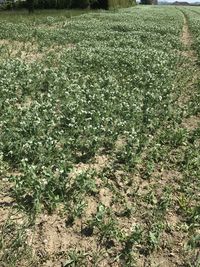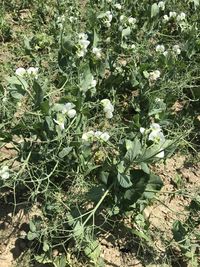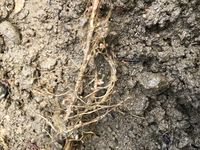Urban gardens with rhizobial bacteria
For new projects around Nature Based Solutions to Urban Development, and the potential CCCP proposal, some tests are soon beginning!
An initial trial for urban gardens with rhizobial bacteria will test whether specific rhizobial bacteria will improve the growth of peas.
The rhizobial strain needed for peas, Rhizobium leguminosarum Jordan, has been ordered from ATCC.
UPDATE: 9June18 - the bacterial strain is in the lab and grows well in the liquid media! Pots for participants are expected to be available around 27June!
Planning dates (esp around peoples' vacations) will be facilitated by a new form... Watch this space!
Two germination trays and a set of bio pea seeds await the arrival of the strain.
Half of the seeds will be sprouted in the tray with no inoculum, and half in a tray also containing the special bacteria.
(conc to be decided still)
Most likely we will follow these recommendations to soak the peas overnight, then drain them and inoculate half of them with the symbiotic bacterial strain before putting them into the soil in germination trays.
First, percentage germination for both trays will be quantitated (hoping there is no special effect of the inoculum!).
Then, we will have recruits (trial participants) that have home gardens (potager) and are willing to document the growth of their seedlings.
Ideally, the participants will take a dozen of each sprout (inoculated and control, coded, however, so they don't know which group is which), and after a few weeks of growth we will have them look closely at roots for maybe 2 plants of each batch, trying to quant number of nodules per cm of root... (for example)
Care will need to be taken in this process, so hopefully there won't be damage to the plants, but as long as more than 5 remain undisturbed and grow until harvest, we should be in ok shape...
Additionally, the number of plants to adulthood (making flowers, making a pea crop) will be scored, then finally number of pods and number of peas will be also obtained.
From 10 plants (or 12 in cases where the nodule counts don't ruin everything - if care taken, reportedly possible) we could get a good idea about how effective the treatment was from these numbers.
How many seeds in packet?
How many people are interested?
Several signed on at the #OH200, 2May.
What do they take them home in? more of same soil (sterile??)
to keep identities 'blind' will need to sort this out in advance of the transfer date!
---
If possible, soils might be saved and used for 2nd test (?? just from resid plants in initial tray tests) for long term fertility for a second crop (non-legumous, tomatoes?).
---
There is some good background information here about how important the correct rhizobial bacteria in nodules are for nitrogen fixing... (in the context of peanuts, however, which symbiose with a different bacterial species)
Here is some more insiprational citizen science - a monoculture vs polyculture experiment.



